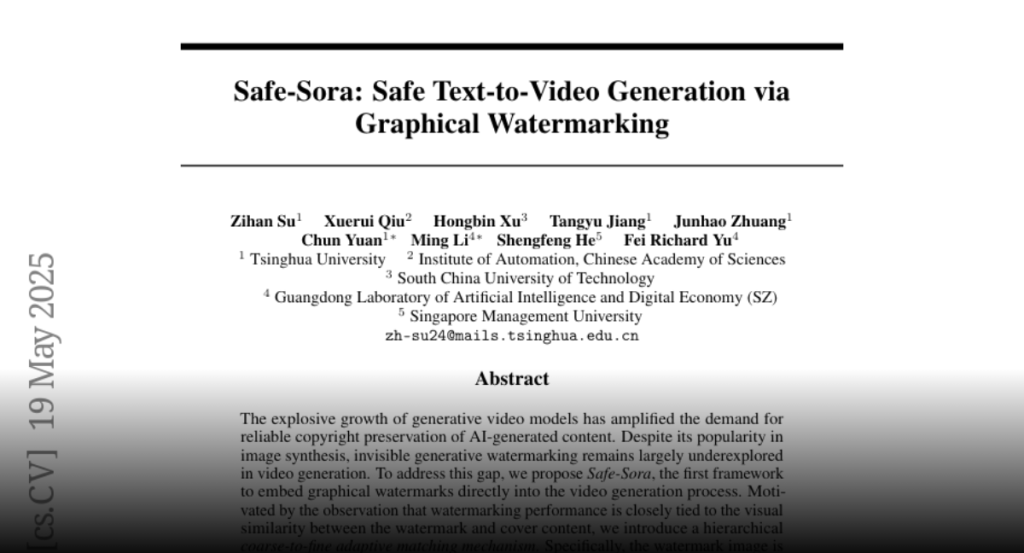Safe-Sora embeds invisible watermarks into AI-generated videos using a hierarchical adaptive matching mechanism and a 3D wavelet transform-enhanced Mamba architecture, achieving top performance in video quality, watermark fidelity, and robustness.
The explosive growth of generative video models has amplified the demand for
reliable copyright preservation of AI-generated content. Despite its popularity
in image synthesis, invisible generative watermarking remains largely
underexplored in video generation. To address this gap, we propose Safe-Sora,
the first framework to embed graphical watermarks directly into the video
generation process. Motivated by the observation that watermarking performance
is closely tied to the visual similarity between the watermark and cover
content, we introduce a hierarchical coarse-to-fine adaptive matching
mechanism. Specifically, the watermark image is divided into patches, each
assigned to the most visually similar video frame, and further localized to the
optimal spatial region for seamless embedding. To enable spatiotemporal fusion
of watermark patches across video frames, we develop a 3D wavelet
transform-enhanced Mamba architecture with a novel spatiotemporal local
scanning strategy, effectively modeling long-range dependencies during
watermark embedding and retrieval. To the best of our knowledge, this is the
first attempt to apply state space models to watermarking, opening new avenues
for efficient and robust watermark protection. Extensive experiments
demonstrate that Safe-Sora achieves state-of-the-art performance in terms of
video quality, watermark fidelity, and robustness, which is largely attributed
to our proposals. We will release our code upon publication.

